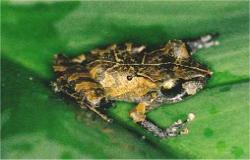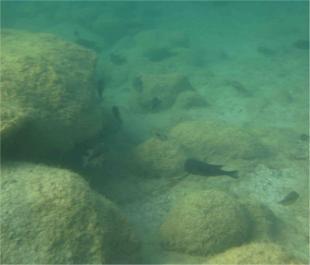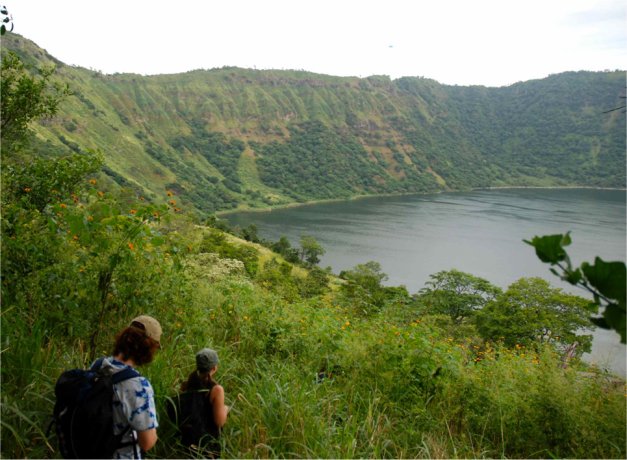Dr Kathryn Elmer
Contact details:
Room 402, Graham Kerr Building
Institute of Biodiversity, Animal Health & Comparative Medicine
College of Medical, Veterinary & Life Sciences
University of Glasgow
Glasgow
G12 8QQ
Tel.: 0141 330 6617
Fax: 0141 330 5971
E-mail: Kathryn.Elmer@glasgow.ac.uk
Research interests: speciation, adaptive radiation, ecological genomics, phenotypic plasticity, ecological adaptation, ichthyology, herpetology, adaptation to environmental change
For a full list of publications, see Kathryn Elmer at Google Scholar
or
ResearcherID D-7734-2013
For lab news, papers and team, see
http://elmerlab.blogspot.co.uk/
I am a member of Scottish Crucible (2014)
Current Projects
This represents a selection of my research interests. Please contact me if you wish further information or, for students, wish to discuss ideas for tailoring your own project within our team.
Adaptation genomics of trophic polymorphism
A great challenge of evolutionary biology is that many processes occur on long timescales and are difficult to study or replicate. Therefore, I am especially fascinated by parallel evolution, or the repeated evolution of phenotypically similar species in spatially isolated but similar environments. In those cases we can use these ‘natural experiments’ to dissect the ecological, phenotypic, and genetic mechanisms and responses in diversification (see Elmer & Meyer (2011) Adaptation in the age of ecological genomics: insights from parallelism and convergence. Trends in Ecology & Evolution, 26, 298–306). Using adaptive radiations of northern freshwater fishes as a model system, this project aims to:
1) determine differential gene expression associated with rapidly evolving and phenotypically plastic trophic polymorphisms induced in the lab;
2) quantify genetic variation that responded to selection during the divergence of trophically polymorphic species, and then to identify the arrangement of this variation across the genome.
Funding: Marie Curie Career Integration Grant (FP7); Catalyst Fund, Wellcome Trust Institutional Strategic Support (Univ. Glasgow); Pilot Funding; Wellcome Trust Institutional Strategic Support (Univ. Glasgow)
Speciation in megadiverse groups
Species rich groups provide a good system to test demography and environment in speciation because there are numerous lineages to assess as replicates. For example, the forests on the slopes of the Andes mountains are a famous but poorly understood ‘biodiversity hotspot’. I have inferred evolutionary histories of morphological stasis despite deep genetic divergence (cryptic species) in species complexes of frogs and salamanders. My research challenges a prevailing hypothesis that this region’s species richness was generated by historical Pleistocene climate change. Instead, I found that species branching was much older and may instead have been promoted by ancient landscape changes.

Example publications:
Elmer KR, Dávila JA, Lougheed SC (2007) Cryptic diversity and deep divergence in an upper Amazonian frog, Eleutherodactylus ockendeni. BMC Evolutionary Biology, 7, 247. http://www.biomedcentral.com/1471-2148/7/247
Elmer KR, Dávila JA, Lougheed SC (2007) Applying new inter-individual approaches to assess fine-scale population genetic diversity in a neotropical frog, Eleutherodactylus ockendeni. Heredity, 99, 506–515. doi:10.1038/sj.hdy.6801025
Elmer KR, Cannatella DC (2008) Three new species of leaflitter frogs from the upper Amazon forests: cryptic diversity within Pristimantis “ockendeni” (Anura: Strabomantidae) in Ecuador. Zootaxa, 1784, 11–38.
Elmer, K. R., R. M. Bonett, D. B. Wake, and S. C. Lougheed. 2013. Early Miocene origin and cryptic diversification of South American salamanders. BMC Evolutionary Biology 13: 59

Parallel evolution in cichlid fishes
To investigate natural selection and genetic patterns in the origins of species, I studied a parallel adaptive radiation of cichlid fishes found in sympatry and allopatry in depauperate habitats: recently formed crater lakes. This research found that parallelism of body shape across populations, non-parallel genetic patterns in signals of selection, and extremely rapid sympatric diversification. This work was carried out in my previous positions as a postdoctoral fellow and then assistant professor in Evolutionary Biology at the University of Konstanz, Germany .
Example publications:
Kautt A, Elmer KR, Meyer A (2012) Genomic signatures of divergent selection and speciation patterns in a “natural experiment”, the young parallel radiations of Nicaraguan crater lake cichlid fishes. Molecular Ecology, 21, 4770–4786. doi: 10.1111/j.1365-294X.2012.05738.x
Elmer KR, Kusche H, Lehtonen TK, Meyer A (2010) Local variation and parallel evolution: morphological and genetic diversity across a species complex of Neotropical crater lake cichlid fishes. Philosophical Transactions of the Royal Society of London. Series B, 365, 1769–1782. doi: 10.1098/rstb.2009.0271
Elmer KR, Fan S, Gunter HM et al. (2010) Rapid evolution and selection inferred from the transcriptomes of sympatric crater lake cichlid fishes. Molecular Ecology, 19 Suppl. 1, 197-211. doi: 10.1111/j.1365.294X.2009.04488.x
Partial list of funders: Alexander von Humboldt, NSERC, AFF, Univ. Konstanz Young Scholars Fund Awards (2008, 2010) (http://www.forschung.uni-konstanz.de/en/)

Teaching
"Ecological Speciation". This is a recommended option for BSc Honours in Marine & Freshwater Biology, MSci in Marine & Freshwater Biology; BSc Honours in Zoology, MSci in Zoology.
Contributing lectures to undergraduate "Evolutionary Biology" and "Animal Diversity"

